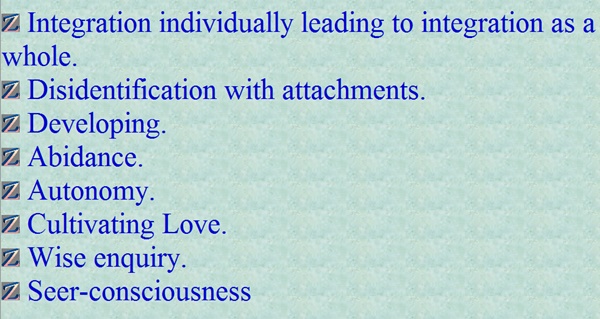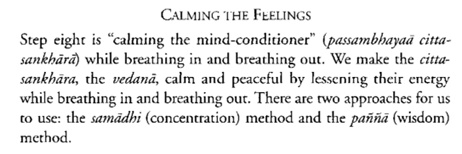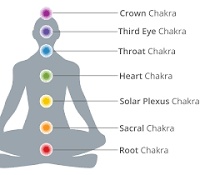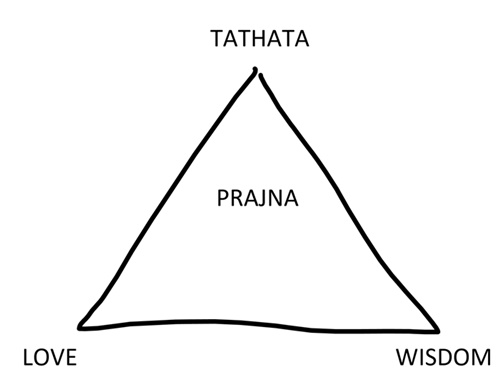Zandtao has reached a point of summary with regards to Jac and the z-quest into secular path?. Is what she writes free of dogma or simply free of established dogma? What does this all mean in terms of the sense of this secular z-quest as a whole? Does looking at Jac contribute to the question of a secular path?
Where zandtao’s own path has taken him with this is into an understanding of the love-wisdom balance, embodiment and the 3 integrations. How much is this related to secular? It seems there is some sort of ongoing process that zandtao is not clear about. Is it connected to the journey into the unknown? This summative process is concerned with consolidating around these questions, and determining the status of this secular z-quest.
Where has this secular z-quest taken him? Long ago (it seems) he looked at Stephen and his secular approach which was connected to the 4 Noble Truths and calling what was not 4NT metaphysics. This led zandtao to the 3 prongs:-

From this developed the 8 components of a core practice:-

In the intro to this 3rd part zandtao felt his MwB practice contained these core components but he had not recognised there was an issue with love and the feminine way.
In some ways this was being explored with a z-quest into Jac’s book but it was also being more closely explored by an examination of his practice through meditations from Nicola Amadora - Divine Mother meditation, and from Jac herself - her embodiment meditation. It was these meditations and the examination that led zandtao to consolidate around two connected questions – love-wisdom balance and embodiment. From seeing MwB as being validated by the 8 core components of practice zandtao was now questioning MwB and this core – where is love-wisdom?
Certainly MwB needs to be questioned as does Buddhadasa. For zandtao Buddhadasa was his entry into Buddhism; rather than studying all that Buddhism had to offer zandtao focussed on Buddhadasa’s interpretation of the Buddha. This was founded on who Buddhadasa was, exemplified by an understanding that came from Buddhadasa’s Thai name meaning “slave to the Buddha”. Zandtao is content that this was a sound entry into the understanding of Buddhism.
But when we consider love and patriarchy Buddhism especially Theravada Buddhism needs to be questioned. When you observe Theravada Buddhism you see lay people and men in orange robes. A closer look in terms of patriarchy leads you to Bhikkhuni ordination in 2009, and there is institutional bias. Since 2009 zandtao has accepted that the institution was biassed but he thought Theravadan wisdom was not, so he continued to study Buddhadasa and learned a great deal.
In some senses the wisdom is not biassed but once zandtao had developed autonomy (manifested by the crossing of the Prajna threshold) he began focussing on love and the impositions of patriarchy. When Buddhism as a whole is examined through the eyes of love then questions arise concerning patriarchal bias – including a potential bias in the teachings. Was there a love-wisdom balance?
Once this question was asked there was an unravelling concerning MwB and recognising a bias towards wisdom. Zandtao could see patriarchal bias in the acceptance of wisdom because wisdom did not necessarily act against the patriarchy – wisdom and patriarchy could exist together even though the world of patriarchy contained much dukkha. But love and patriarchy cannot exist in this way, when we love our compassion sees the death and destruction (dukkha), and our wisdom sees that this is simply to enable a 1%-satrapy. Once this is recognised then we can understand the need for love to balance wisdom – to help see the way things are. To be fair to Buddhadasa he does express this need for love, but it is not present in his daily practice of MwB. To be equally fair to Buddhism there is much love expressed throughout, but zandtao feels there are institutional restrictions concerned with love and sampajanna.
Together with the guided meditations zandtao examined MwB, and as stated in the intro to this 3rd part began looking at changes. In the intro he began describing love as one of the 5 Dhamma comrades – Buddhadasa had four, cultivation of the 5th Dhamma comrade of love needs to be part of zandtao's practice; in MwB zandtao knew the other 4 comrades arose rom practice (although they can be cultivated). The other important recognition in the intro was concerning tathata. The Buddha spoke of wisdom and tathata and knowing and seeing the way things are (App B), but for zandtao there came seer-consciousness asfeeling, knowing and seeing the way things are.
But this was not addressing issues within MwB. Again zandtao wants to defend Buddhadasa’s teachings as a whole. Love-wisdom balance is a matter of emphasis. As a wise person Buddhadasa promotes wisdom but speaks widely of the importance of unconditional love, so the issue with Buddhadasa is only the emphasis of the love-wisdom balance in MwB.
So in MwB there is omission of love, most ostensibly in the “mastering of vedana”. Buddhadasa approaches the vedana by calming, zandtao now asks that we promote love to deal with the vedana. In Buddhadasa’s 4 stages of the 2nd tetrad concerning these vedana, they are brought under control through the jhanas of piti and sukha in steps 5 and 6 leading to a peaceful happiness from sukha that calms the mind. Buddhadasa sees the breath of tetrad 1 and piti and sukha of tetrad 2 as mind-conditioners – calming:-

Buddhadasa’s aim is to bring calm to the mind, but zandtao suggests that whilst it is important for the mind to be calm it is important for the vedanas to feel love. Do we want to lessen the energy of the vedana or do we want to use the energy of the vedanas to feel love? For zandtao the vedanas are understood through the jhanas of piti and sukha, we see how they can affect the mind and seek to bring calm to the mind beginning with sukha. But the vedanas have energy that contribute to sampajanna, they are an energy to embody and put love-wisdom into action. So for zandtao the emphasis of tetrad 2 is to develop the feeling of love, and through love we harness the energy of the vedanas as part of our love-wisdom balance in action. Zandtao has adapted Nicola’s Divine Mother meditation as part of his MwB practice. Once we have seen the impact of piti and sukha, and can see the impact of vedanas on the mind we can feel a calming of the mind. Then we begin to feel love. We draw love from the Divine Mother Gaia and bring love into the body through the root chakra up the chakra ridgepole into the heart – or simply put we draw love from the earth into the heart. It is this love that the vedana energy empowers.
After tetrad 2 we develop the 4 brahma-viharas with Gaia’s love empowering karuna, metta, mudita and upekkha. From there we contemplate citta releasing attachments of kilesa, upadana and khandhas. At this point we are free to be wise as well as free to feel love from tetrad 2.
The 4th tetrad is concerned with reconnecting with Dhamma leading to tathata. Steps 13 and 14 remain unchanged recognising the 3 characteristics of anicca, anatta and in step 14 quenching dukka through atammayata. This is integrating the vihara of body, energy and mind with the Dhamma – the first integration.
This leads to step 15 where there is a significant change as we embody the love-wisdom balance; this is an adaptation of Jac’s embodiment meditation. We have already brought love into our hearts with tetrad 2. Now we want to integrate love-wisdom in our being – love-wisdom embodiment. We create spaciousness throughout our bodies by releasing attachments bearing in mind that we have started to bring love in. Then we bring love-wisdom into the chakra ridgepole – our vertical core. Zandtao uses chakras but if you are not comfortable with chakras just bring love-wisdom into your spiritual core – a vertical core that surrounds the spine.
Zandtao uses this model of chakras:-

From this diagram you can see what zandtao means by a vertical core. It is not necessary to have any beliefs associated with chakras – they are just places where love-wisdom is going to be brought in and felt. We bring in love from the earth and wisdom from above using each chakra in turn. Once we have brought love-wisdom into the 7th chakra, we integrate this love-wisdom into the ridgepole – the vertical core. We feel this core as love-wisdom.
Once we are comfortable with this we integrate that love-wisdom into the spaciousness that we have created so that we just feel love-wisdom. This is the 2nd integration – the love-wisdom integration.
And we come to the final integration – integration with Unity – interbeing. This 3rd integration is just an extension of the 2nd integration – extending and integrating with Unity so that we just feel that all there is is love-wisdom.
Now we enter stage 16. From perfecting our vihara we have released consciousness that had attached to the body, feelings and mind, and with this consciousness we have faith in the path – we abide in the path. From this abidance we become the love-wisdom and using the consciousness with love-wisdom we see. We use deep feeling and knowing to see deeply – tathata.

In this way zandtao has resolved his love-wisdom with MwB – he now calls it love-wisdom MwB meditation, his practice - ZPAP.
This brings together what he discussed in the introduction of this part into his practice. But writing has always been a part of his path so how does this come together? What started with a z-quest on Stephen’s book has exploded.

But that explosion has led to a resolution of his new practice and a much greater understanding of threshold of autonomy. He now hopes that any seeker who works with zandtaomed will reach autonomy – one of the core components. Above he has described in his own practice the 3 integrations, and these 3 integrations are a description of the core component of integration. At this point zandtao should also mention that seer-consciousness which was originally knowing and seeing the way things are has become feeling, knowing and seeing the way things are ie the tathata of seer-consciousness.
Where does this explosion leave this z-quest? There are the three integrations, integration as the 4 foundations (reconnecting the vihara to Dhamma), the integration of a love-wisdom balance, and integration with Unity or source-consciousness. Could the 8 components be considered secular? Maybe guidance as to a secular path? It is maybe OK to see these core components as possibly being a commonality in core practices but he has no desire to be prescriptive; he does not feel that Stephen's 4NT could be prescriptive either.
Looking at Stephen’s book gave rise to the 3 prongs for zandtao:-

Stephen's Dharma practice was the 4 Noble Truths together with what he described as metaphysics. Zandtao felt that this approach lacked wisdom and tathata knowing and seeing the way things are, what he called seer-consciousness in the 8 components.
This leaves questions of metaphysics, what zandtao associated with avyakata. On his journey into the unknown zandtao has felt there have been questions not to be answered at the time even calling them zandtao-avyakata. These questions are not a static metaphysics but as zandtao journeys into the unknown aspects of the unknown become known and the unknown increases. Zandtao-avyakata changes and zandtao accepts that, not avoiding but recognising that at times some questions are best left unanswered.
This leaves the unknown – the journey into the unknown guided by autonomy. Jac talks of free from dogma, doesn’t anyone’s path or journey become dogma (ditthi) once it is written or expressed as ideas? But in autonomy and authenticity there is a freedom from dogma, and zandtao does consider that autonomy is secular. The practice itself often arises out of an institution - as does ZPAP arising from MwB, but in autonomy the seeker is free from institution - as Buddhadasa might say "no religion". It is the autonomy (authenticity) that is free from dogma, free from institution - secular. But once you describe autonomy there is dogma. For the other 6 of the core components there is equally a secular sense, but once you begin to describe detail they also become dogma - and therefore non-secular. It is this core sense, this noumenal sense, that the secular seeks - perhaps using the 8 core components as a guide; but the greatest worth arising from this z-quest is that there is a noumenal commonality, that our paths need not be divided, and that we can come together in autonomy and authenticity.
As zandtao delved into Jac’s book he learned of her fearless approach, and questions whether that is an approach for all. Without autonomy there is no journey, the seeker needs to be ready for this autonomy. Rather than fearlessness doesn’t there need to be a readiness? Are we always ready for another’s approach? If we work at another’s speed are there risks of vulnerability?

How we prepare the best vihara changes with our practice and our study. As we release attachment consciousness builds our faith hopefully leading to some level of abiding but this can only go as far as we are ready for. There can be fearlessness or negatively recklessness; there is courage to take the path on but if we take it on when we are not ready maybe we become fearful and alienated from our paths. There is a balance of readiness to do the best we can to be the best we can be.
What are we left with as to what to do? We continue with our journeys into the unknown; follow our practice, study and meditate, embody love-wisdom, and be creative. Abide in our paths.
Contents/Previous

|
|


